Deforestation refers to the removal or destruction of forests and woodlands, leading to the conversion of forested areas into non-forest land uses. Asia's forests are vital ecosystems that support rich biodiversity, provide livelihoods for millions of people, and play a crucial role in absorbing carbon dioxide. In this blog, we will explore the historical context of deforestation in Asia, examine the current state of deforestation in the region, present case studies of deforestation hotspots, and discuss prospects and challenges in curbing deforestation.
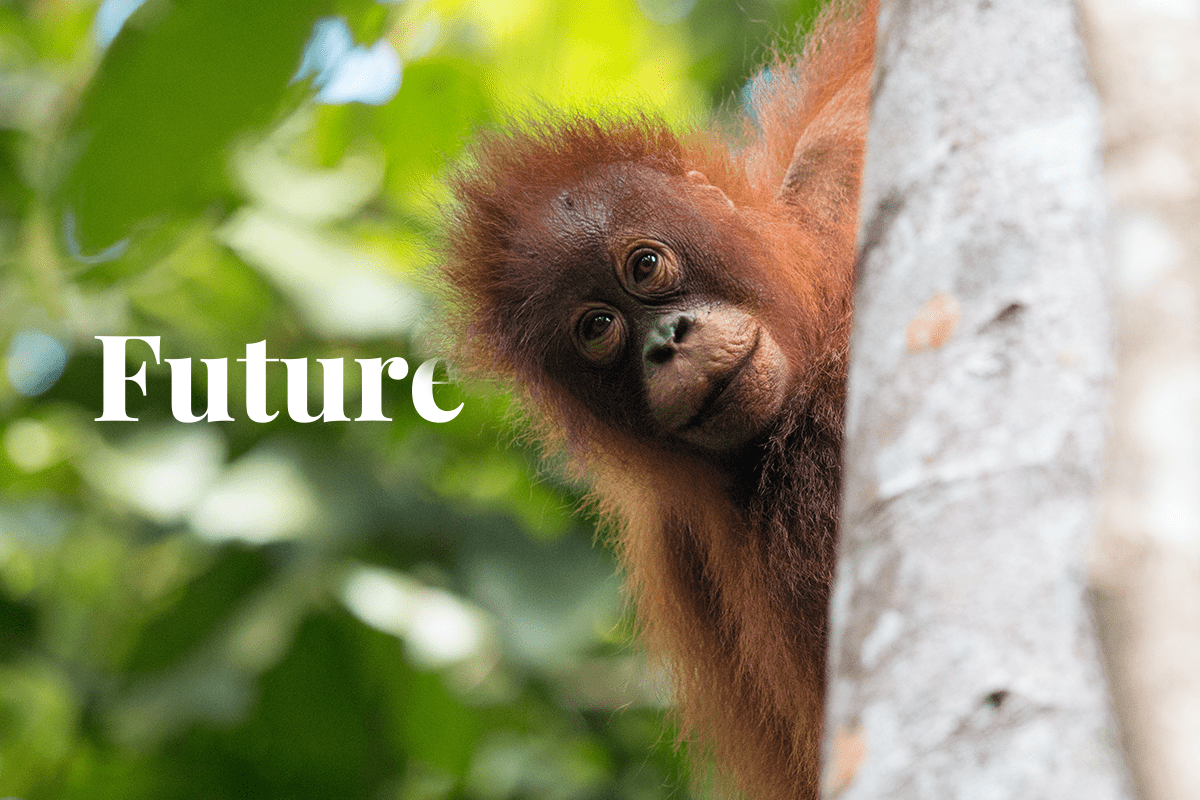 Baby orangutan sitting on a tree in National Park in Borneo, Indonesia.
Baby orangutan sitting on a tree in National Park in Borneo, Indonesia.
Historical context
For centuries, Asia's forests have been an integral part of the region's cultural and economic fabric, providing resources for food, medicine, and shelter. However, population growth, agricultural expansion, infrastructure development, and unsustainable logging practices have historically contributed to deforestation in Asia. Rapid population growth has increased the demand for agricultural land, leading to the conversion of forests into croplands. Additionally, infrastructure projects, such as road construction and mining operations, have often resulted in the clearance of large forested areas. The arrival of colonial powers in Asia and subsequent industrialisation intensified deforestation, driven by the demand for timber, agricultural land, and natural resources.
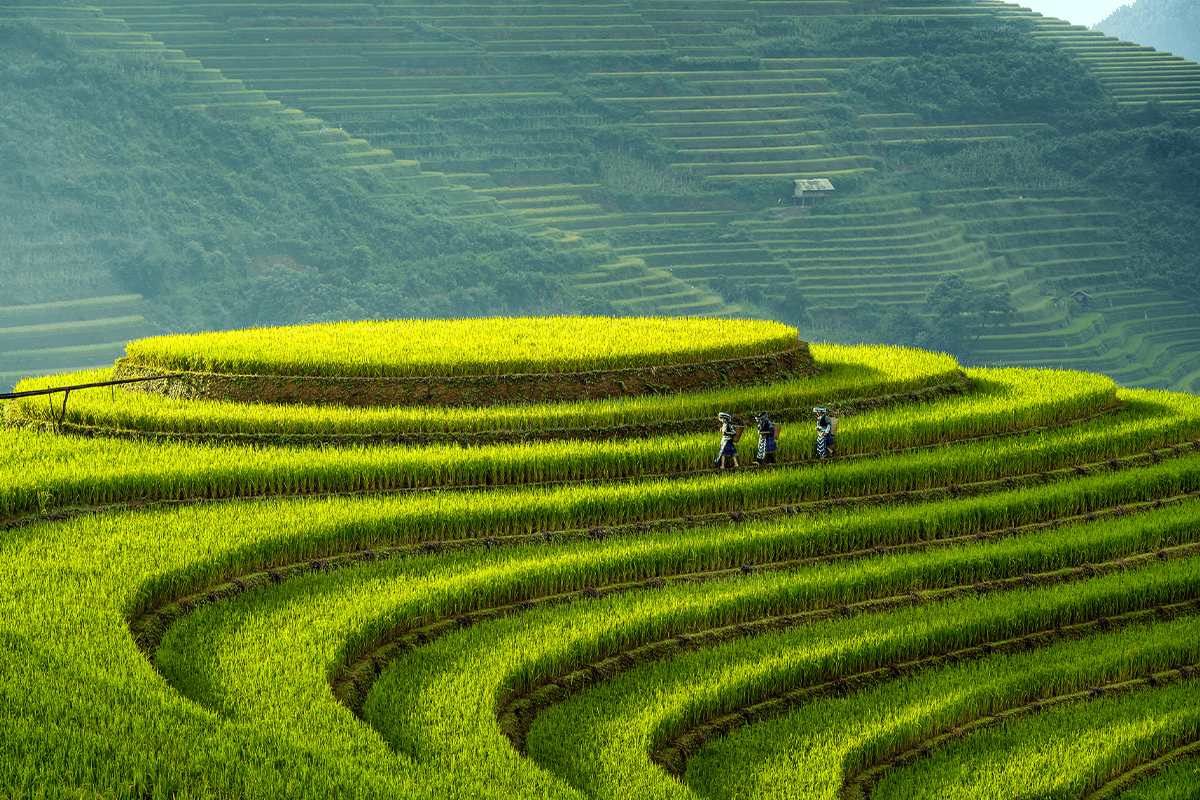 Rice fields on terraces of Mu Cang Chai, Vietnam.
Rice fields on terraces of Mu Cang Chai, Vietnam.
The current state of deforestation in Asia
According to statistics, between 1990 and 2005, Asia lost approximately 40 million hectares of forest, representing a 12% decrease in forest cover. Deforestation is especially severe in Southeast Asia, home to nearly 15% of the world’s tropical forests. The region has the highest deforestation rate in the world, losing 1,2% of its forest annually. Countries such as Indonesia, Malaysia, Myanmar, and the Philippines have experienced significant deforestation.
Key drivers of deforestation in Asia include agricultural expansion, logging for timber and pulp, infrastructure development, mining activities, and illegal logging. Agricultural practices, particularly for commodities like palm oil, soya, and rubber, have driven large-scale deforestation in countries like Indonesia and Malaysia. Logging, both legal and illegal, continues to be a significant cause of deforestation in many Asian countries.
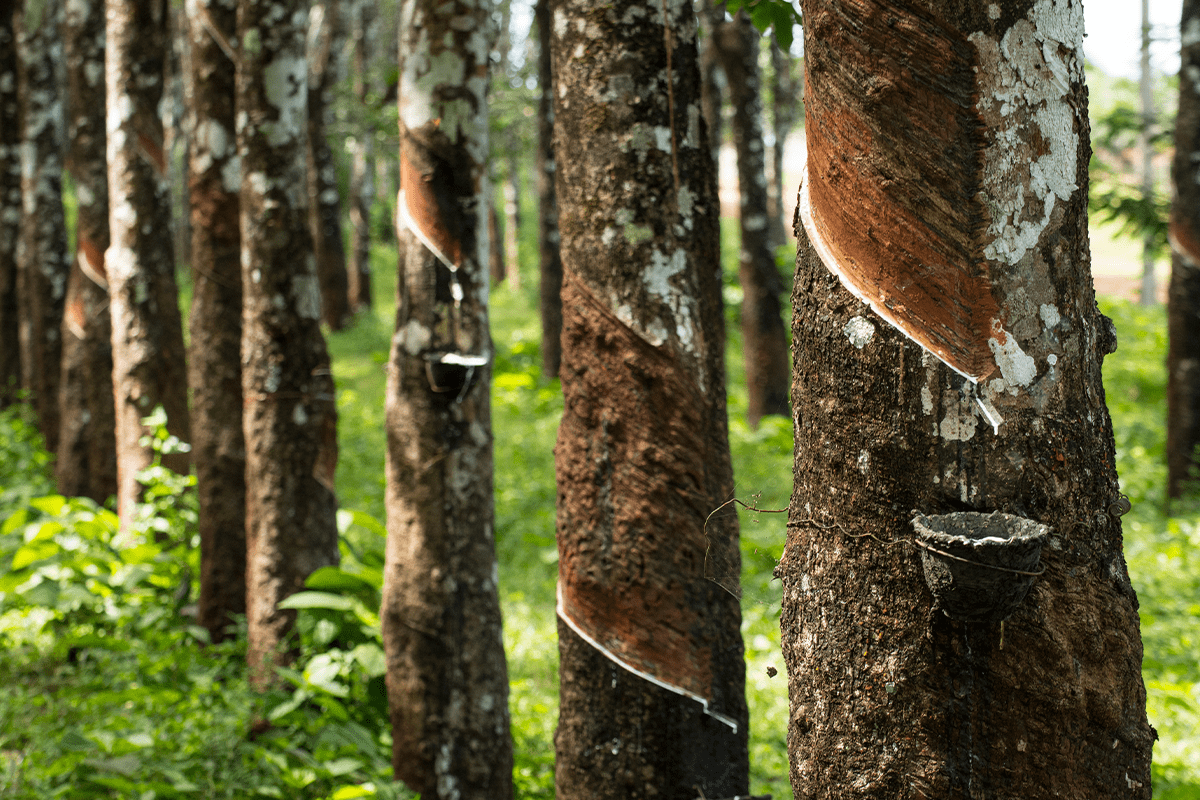 Rubber trees plantation in Thailand.
Rubber trees plantation in Thailand.
The environmental and social consequences of deforestation in Asia are profound. Deforestation has led to the loss of biodiversity, soil erosion, water pollution, climatic instability, displacement of Indigenous communities, and the disruption of ecosystem services. The destruction of forests disrupts delicate ecosystems, leading to the extinction of numerous plant and animal species. Deforestation also contributes to exacerbating the greenhouse gas effect, as forests act as carbon sinks, absorbing and storing carbon dioxide. Additionally, Indigenous communities and local populations who rely on forests for their livelihoods face displacement and loss of cultural heritage.
Read more: Top 10 causes of deforestation
Case studies: hotspots of deforestation in Asia
1. Borneo's tropical forests
Borneo, the largest island of Asia, shared by Indonesia, Malaysia, and Brunei, is renowned for its vast tropical rainforests, which are home to unique species such as the Bornean orangutan and the Borneo pygmy elephant. A 2020 study shows that between 1973 and 2015, 50% of the Bornean rainforest was lost.
Deforestation in Borneo is primarily driven by logging, agricultural expansion, and infrastructure development. The conversion of forests to palm oil plantations has been particularly prevalent, leading to habitat loss, biodiversity decline, and greenhouse gas emissions. Indigenous communities who depend on the forests for their livelihoods are also affected by deforestation.
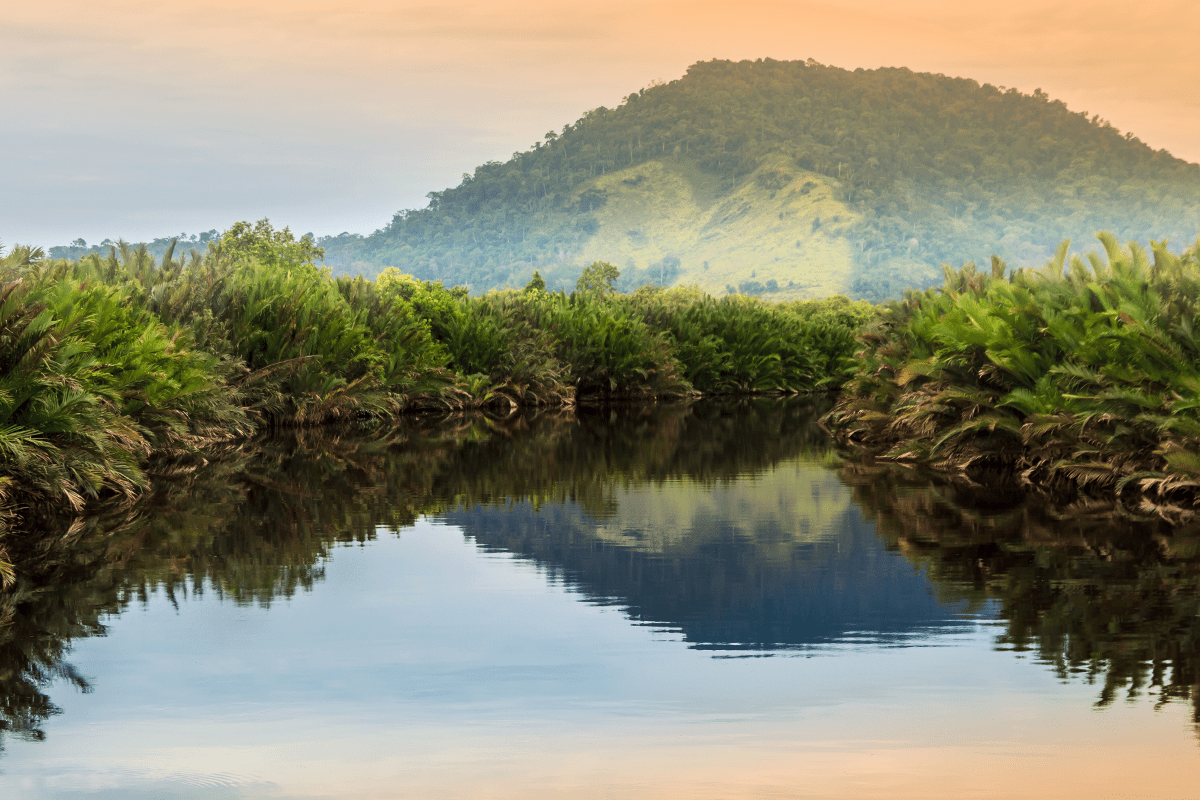 View of tropical jungle on the Borneo island, Indonesia.
View of tropical jungle on the Borneo island, Indonesia.
Local communities and non-profit organisations like the WWF in Borneo have been actively involved in conservation efforts, establishing protected areas, promoting sustainable livelihoods, and engaging in reforestation initiatives. These community-led initiatives play a crucial role in preserving Borneo's forests and supporting local communities.
2. Indonesia's rainforests
Indonesia is home to some of the world's most diverse rainforest ecosystems, including the critically important tropical rainforests of Borneo and Sumatra. Deforestation in Indonesia is primarily driven by the expansion of palm oil plantations, as well as logging and mining activities. The conversion of forests to palm oil plantations has resulted in habitat loss, biodiversity decline, and increased carbon emissions. Deforestation also exacerbates the risk of forest fires, having caused widespread air pollution and environmental degradation.
Read more: Deforestation in Indonesia and its impact on the environment
The Indonesian government has implemented policies such as the moratorium on new licences for forest conversion and initiatives like the Reducing Emissions from Deforestation and Forest Degradation (REDD+) programme. These efforts aim to promote sustainable forest management, conserve biodiversity, and reduce carbon emissions.
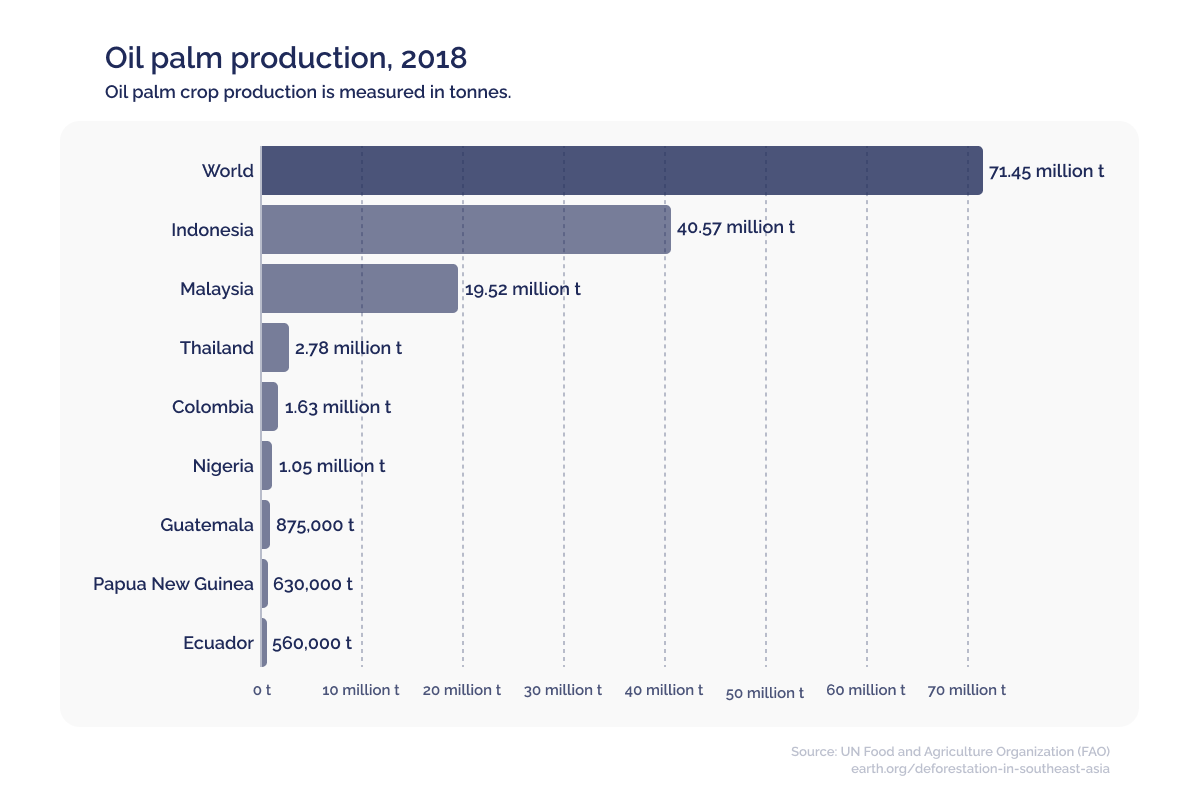 Chart of oil palm production.
Chart of oil palm production.
Indonesia has experienced significant forest loss over the past two decades, with reports indicating the loss of nearly 10 million hectares of primary forest. Furthermore, the country witnessed a substantial 75% decrease in forest cover in 2019, marking its lowest rate since record-keeping commenced in 1990. A study conducted in 2019 revealed that palm oil plantations accounted for the largest proportion (23%) of deforestation in Indonesia between 2001 and 2016.
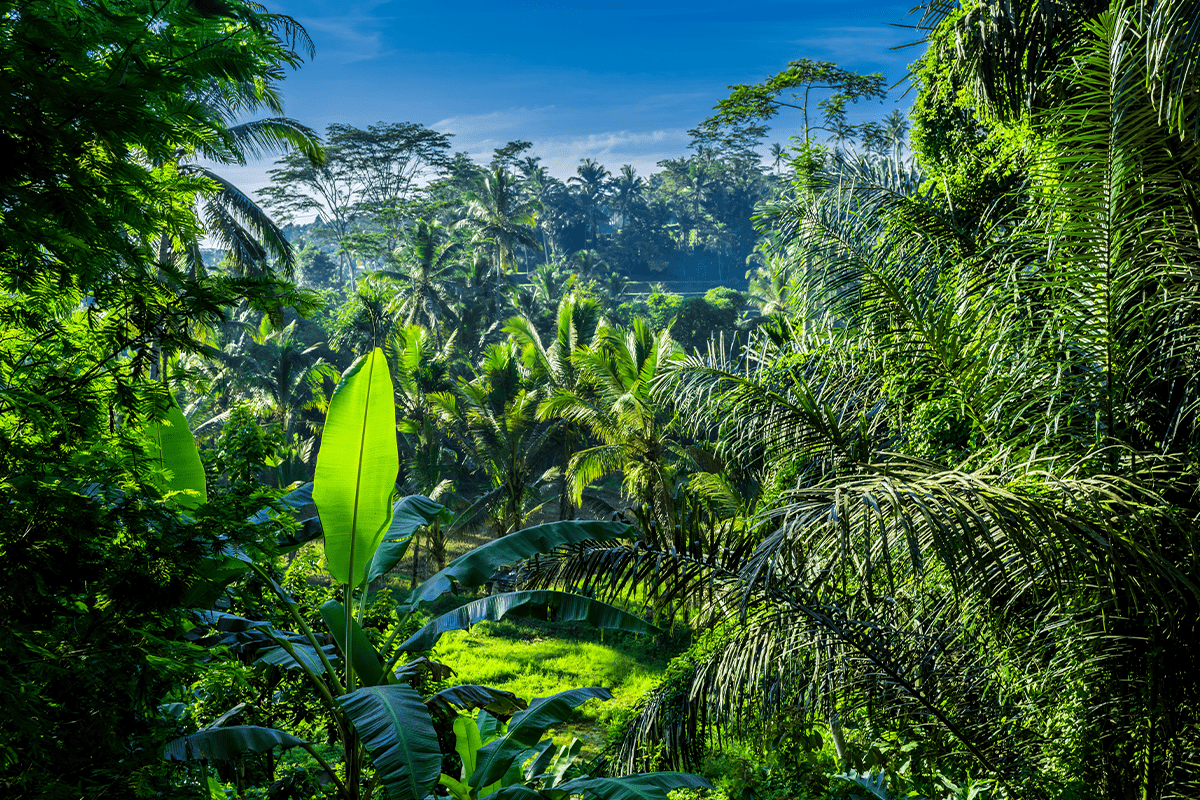 View of a jungle, Bali.
View of a jungle, Bali.
3. The Philippines' forests
The Philippines is known for its diverse forest ecosystems, including rainforests, mangroves, and cloud forests, which are home to a wide array of plant and animal species. Between 2000 and 2021, the Philippines lost about 12% of its total tree cover.
Deforestation in the Philippines is driven by various factors, including logging, agriculture expansion, mining, and illegal activities. The loss of forests in the country has led to soil erosion, biodiversity loss, water resource depletion, and increased vulnerability to natural disasters such as landslides and flooding.
Read more: The Philippines' battle against deforestation: progress and challenges
Local communities and environmental organisations in the Philippines have been actively engaged in reforestation projects, sustainable land management practices, and advocacy for stronger forest protection policies. These efforts aim to conserve the remaining forests, restore degraded areas, and promote sustainable resource use.
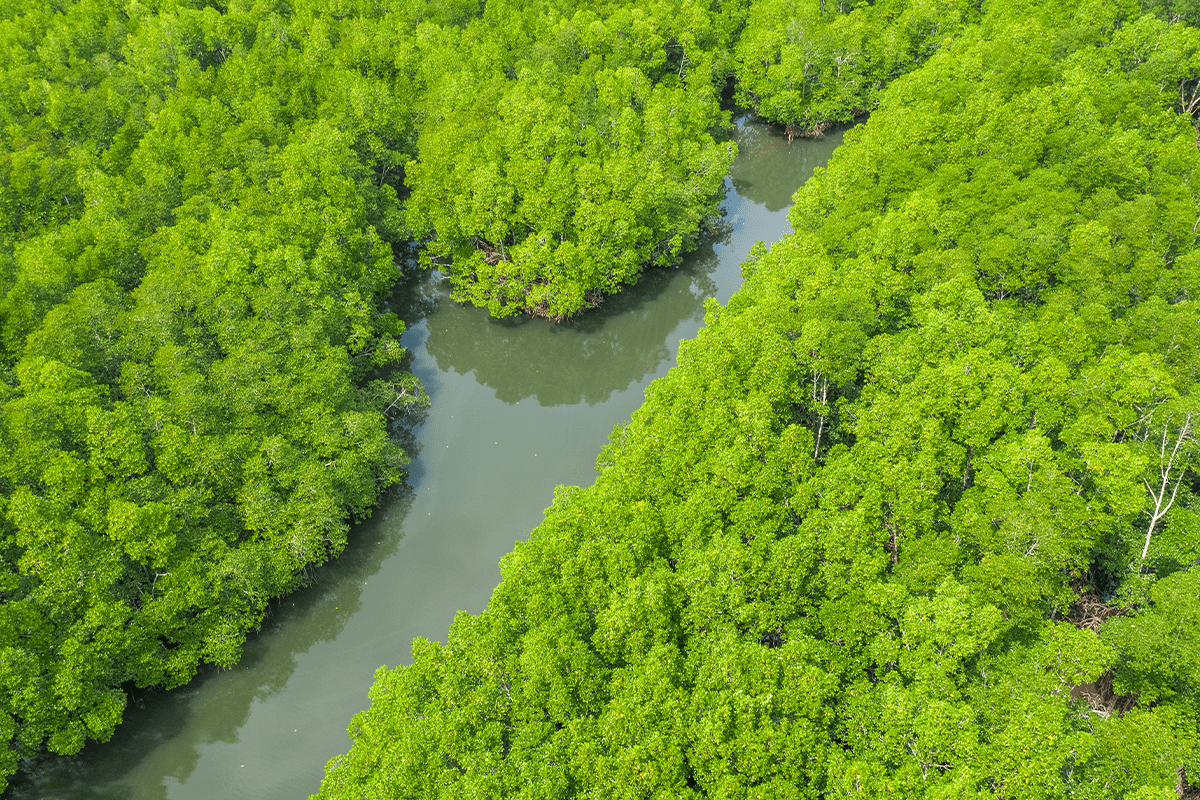 Aerial view of a mangrove forest and a river on Coron island, Philippines.
Aerial view of a mangrove forest and a river on Coron island, Philippines.
4. Myanmar's forests
Myanmar possesses extensive forest areas, including tropical rainforests and unique ecosystems such as the mangroves of the Irrawaddy Delta. The country's forests are rich in biodiversity, supporting diverse flora and fauna.
Myanmar experiences deforestation due to various factors, including illegal logging, agricultural expansion, infrastructure development, and mining. The country faces challenges in addressing deforestation effectively, attributed to weak governance, inadequate law enforcement, and limited resources.
Data reveals the extent of deforestation in Myanmar. Between 2002 and 2021, the country lost approximately 16% of its total forest cover. Myanmar ranks third globally in terms of deforestation rates, following Brazil and Indonesia. According to the Food and Agriculture Organization (FAO), the annual forest loss between 2010 and 2015 amounted to 1.3 million acres, which accounts for approximately 2% of the country's total tree coverage. These figures highlight the urgency of addressing deforestation and its associated challenges in Myanmar.
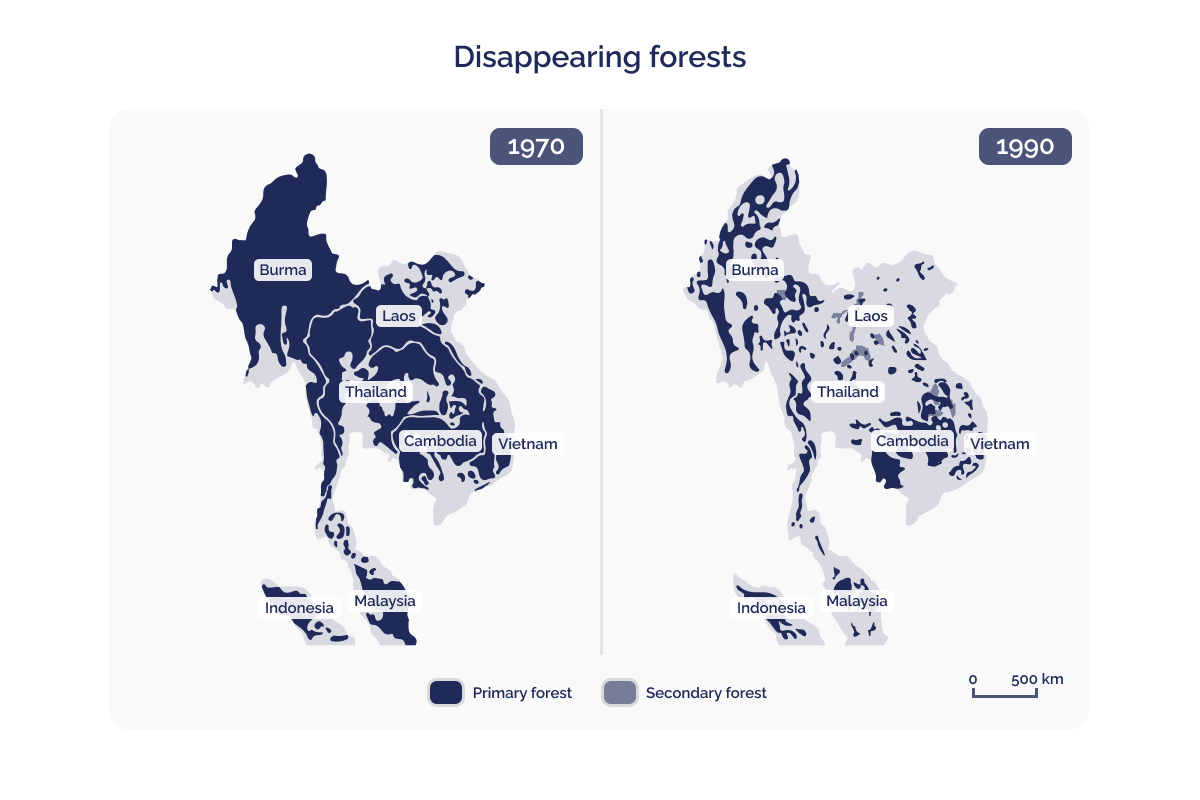 Map of deforestation in Asia.
Map of deforestation in Asia.
Myanmar has implemented initiatives to combat deforestation, including the Community Forestry Programme and the establishment of protected areas. Community-based conservation efforts, supported by local organisations and international collaborations, aim to protect Myanmar's forests, promote sustainable resource management, and improve the livelihoods of local communities.
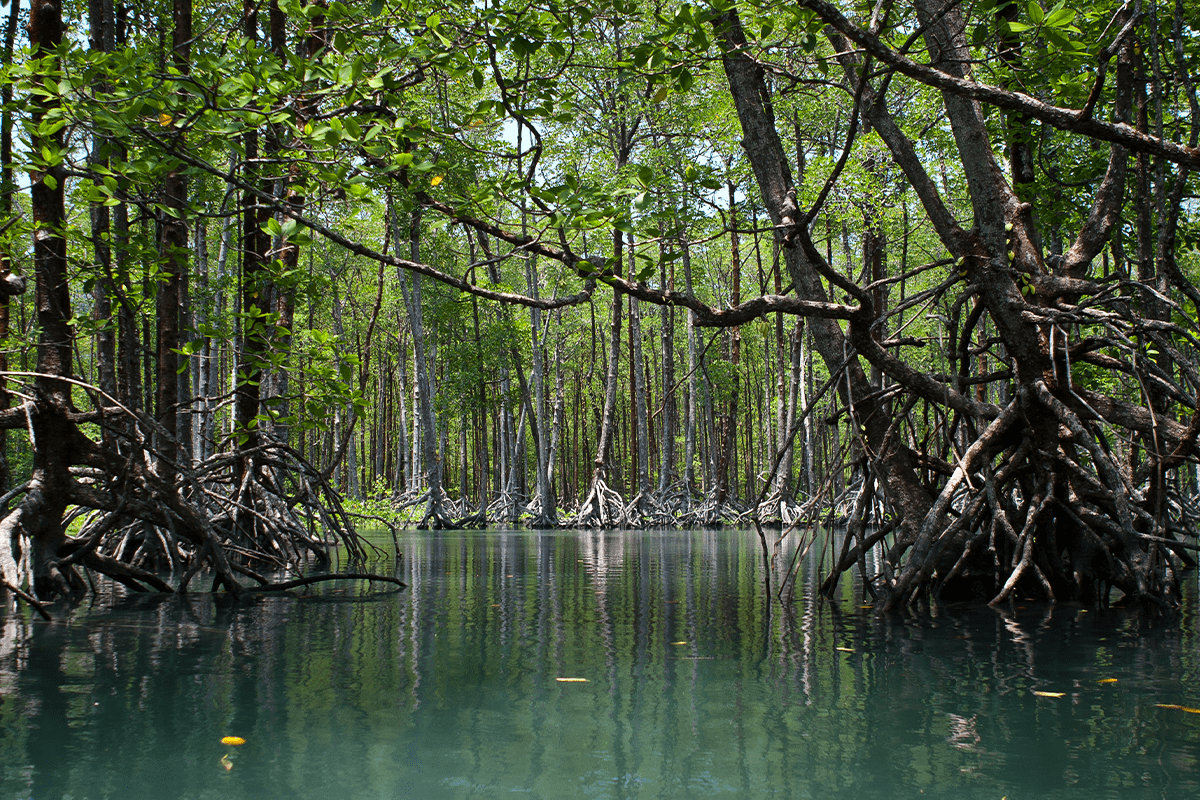 Mangrove trees forests in the Mergui Archipelago in Myanmar.
Mangrove trees forests in the Mergui Archipelago in Myanmar.
Successful conservation efforts and future outlook
Across Asia, there have been notable successes in combating deforestation. Governments, non-profit organisations, and local communities have collaborated on various initiatives, including forest landscape restoration programs, sustainable certification schemes, and community-led conservation projects.
Forest landscape restoration efforts have demonstrated positive impacts, including biodiversity recovery, carbon sequestration, soil erosion prevention, and the restoration of ecosystem services. These projects also contribute to the sustainable development of local communities, providing employment opportunities and supporting livelihoods.
Read more: Reforestation: 10 amazing benefits of planting trees
Deforestation in Asia poses significant challenges and requires concerted efforts to address them effectively. Continued deforestation will result in further biodiversity loss, increased carbon emissions, degraded ecosystems, and far-reaching social-economic impacts. Curbing deforestation requires strengthening governance, enforcing regulations, promoting sustainable land-use practices, supporting alternative livelihoods, and recognising the rights of Indigenous communities. Collaboration between governments, businesses, local communities, and international stakeholders is crucial in achieving sustainable forest management and conservation.
DGB Group’s commitment to restoring forests
Deforestation in Asia is a pressing issue that threatens biodiversity, climate stability, and the wellbeing of local communities. The historical context, the current state of deforestation, but also successful conservation efforts highlight the urgency and need for action. Individuals, governments, businesses, and organisations must collaborate and take decisive steps to protect Asia's forests, preserve biodiversity, mitigate climate change, and ensure a sustainable future. By doing so, we can make a significant difference in safeguarding the invaluable forests of Asia.
Plant trees today with DGB
At DGB Group, we are dedicated to developing and managing large-scale carbon projects across various countries, including Cameroon, Uganda, and Kenya. Through collaborative efforts with local communities, governments, landowners, and investors, we have successfully implemented reforestation initiatives that make a positive impact. Our focus lies in restoring degraded forests, promoting sustainable agroforestry practices, and providing crucial training and resources to farmers.
One notable example of our work is in Uganda, where DGB is implementing a restoration initiative of degraded forests in the Hoima, Bulindi, and Masindi districts of western Uganda. Through our efforts, we have witnessed a significant increase in forest cover, creating improved habitats for the Bulindi chimpanzees and other wildlife species. By working hand in hand, we can ensure a sustainable future and a greener planet.
Choose to make a lasting impact with DGB









